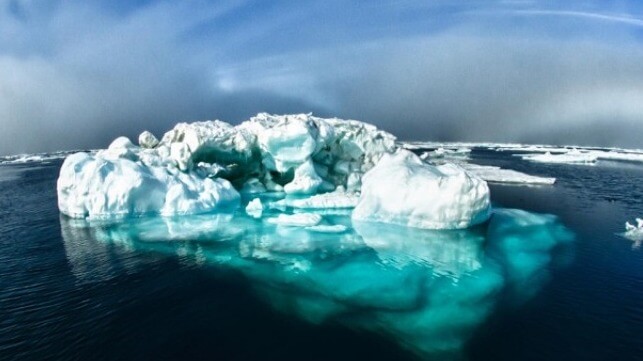Nations Push Back the Timeline for Arctic Fishing Rules

Arctic coastal states have failed to agree on a protocol for commercial fishing in the central Arctic Ocean. The countries had met last week in South Korea for the third conference of parties (COP3) on the Central Arctic Ocean Fisheries Agreement (CAOFA), but could not reach a deal. The parties include Canada, China, Denmark on behalf of Faroes Islands and Greenland, Iceland, South Korea, Norway, Russia, United States and EU.
The central Arctic Ocean is the largest area of the high seas in the Arctic. It spans an area approximately 2.8 million square kilometers, almost the same size as the Mediterranean Sea.
While no commercial fishing is currently taking place in the high seas of the central Arctic Ocean, climate change could open up the region. Historically, the region has only been accessible using icebreakers. In anticipating future commercial fishing in the region, the 10 states in 2018 signed CAOFA after two years of negotiation.
The agreement put a moratorium on commercial fishing in central Arctic Ocean until at least 2037. The time would allow parties to put in place the necessary rules to protect sensitive ocean ecosystems and species in the agreement area. This would help prevent overexploitation and uncontrolled fishing that could negatively impact target and non-target species.
CAOFA had set a deadline of 25 June 2024 for parties to agree on these measures. But during the meeting last week, the countries noted that the full suite of conservation and management measures are yet to be finalized. Based on this, the parties agreed to push the deadline to the next conference, set for June 2025 in Norway.
Meanwhile, the members adopted a Joint Program for Scientific Research and Monitoring (JPSRM) implementation plan. It sets out a comprehensive body of work to be completed, which will inform the specifics of any exploratory fishing. This includes mapping key ecosystems, identifying vulnerable and sensitive habitats, and collection of indigenous knowledge as required by CAOFA.
“It’s encouraging to see broad consensus and belief by the Parties in the spirit of CAOFA, that this sensitive ecosystem must be understood before industrial activity can take place here,” said Susanna Fuller, Vice President of Conservation at the environmental campaign group Oceans North, who was a delegate at the COP3 meeting.
No comments:
Post a Comment